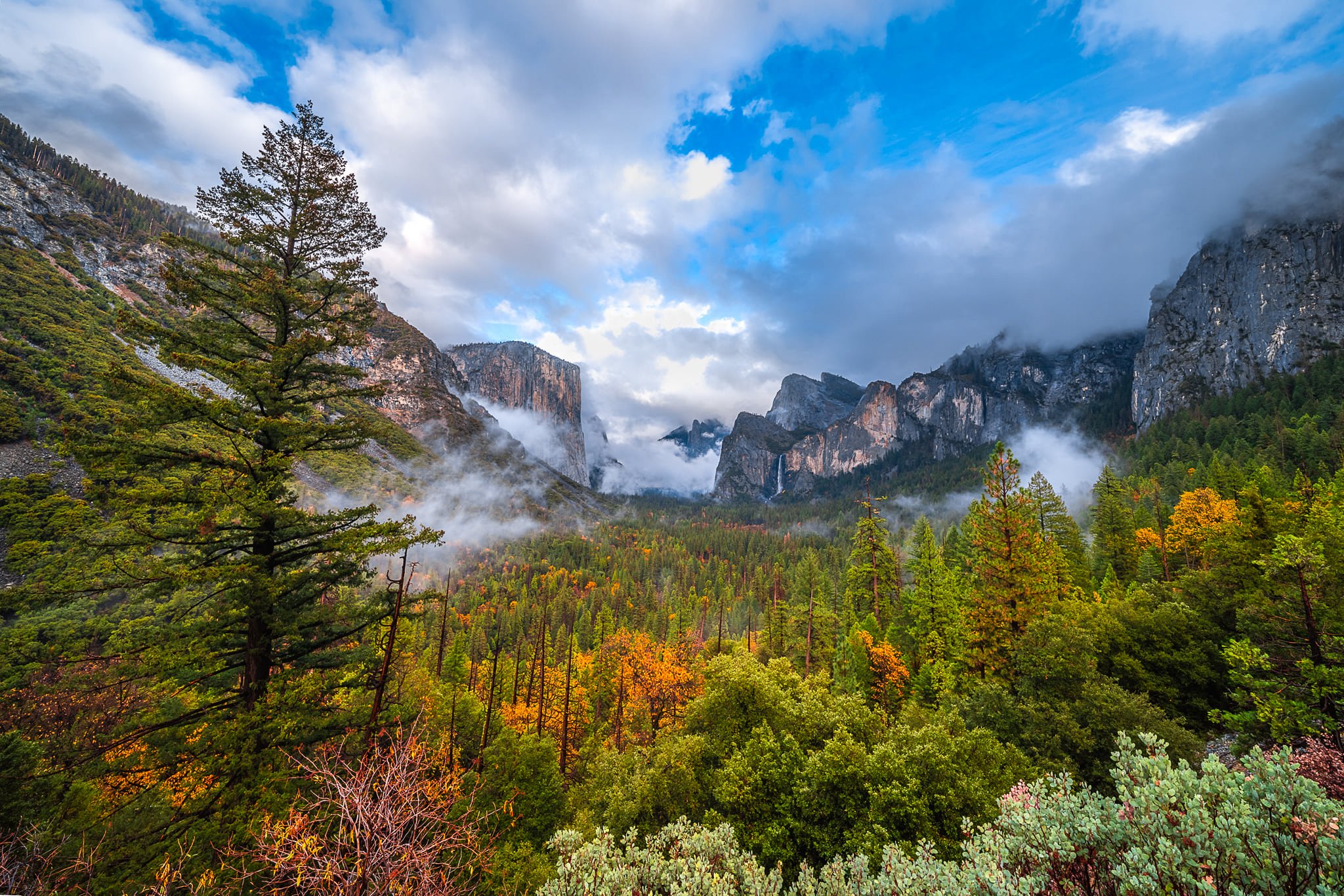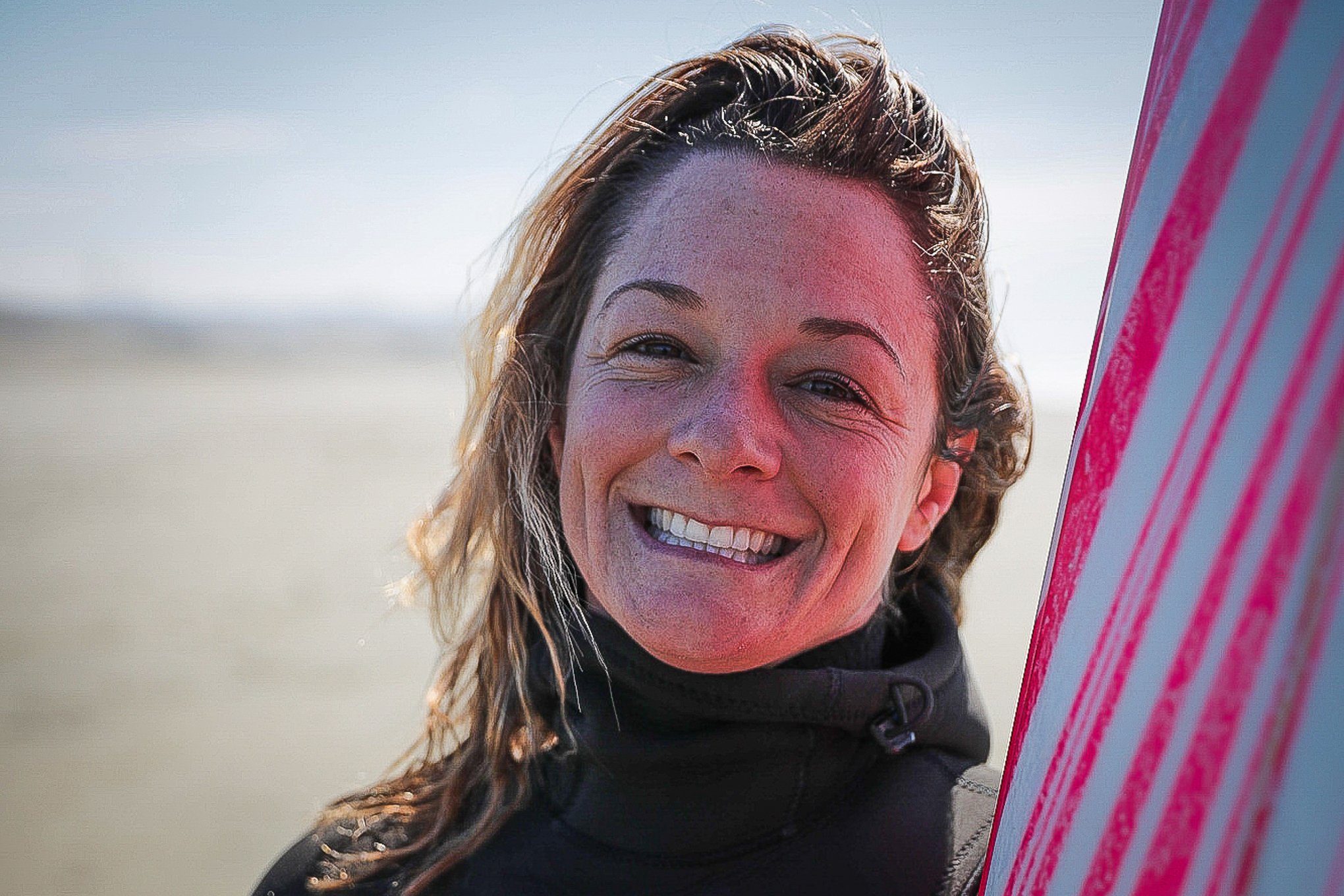
BIOGRAPHIES
BIANCA VALENTI
Bianca Valenti is an elite big-wave surfer and proponent of gender equality in professional surfing who has inspired thousands of women to set aside their fears and paddle into the roiling ocean to surf.
When Bianca Valenti asked a shaper to create a surfboard for her to ride at Mavericks, the famed monster break off the shore of Half Moon Bay, he said he'd do so only if she promised not to die.
With her signature pink surfboard, Valenti became a fixture at Mavericks, previously a male domain until she proved her mettle on waves reaching 50 feet. Valenti was awarded this honor because of her prowess as an elite big-wave surfer, proponent of gender equality in professional surfing and inspiration to thousands of women to set aside their fears and paddle into the roiling ocean to surf.
At the time Valenti began competing in big wave surfing, there weren't female divisions, so she competed against boys and often won. As a teen, she won regularly but saw that women weren't being treated as serious competitors. This led her to successes in achieving gender equality in surfing and changing the sport for women, everywhere.
She is one of 11 women who compete in the World Surf League’s big-wave tour and has been at the forefront of creating opportunities for women outdoor athletes. This league competes at such legendary big wave venues as Puerto Escondido, Mexico; Pe'ahi, Maui, Hawaii; Mavericks, California; Nazare, Leiria, Portugal; and Haiku, Maui, Hawaii.
Valenti led the charge in 2018 to get women equal prize money as men in professional big-wave surfing. Outside Magazine named her one of the Most Accomplished Athletes in 2018 along with famed climber Alex Honnold (COHOF Class of 2020 member) and tennis champion Naomi Osaka.
Most recently, she finished on the podium at the 2021 XXL Big Wave Awards for biggest paddle of the year, is a two times winner of the Puerto Excondido Cup (2018. 2019) and was the first woman to win a big wave competition at Nelscott Reef in Oregon (2014).
She has been featured in the New York Times Magazine, PBS, BBC World News, and ESPN, among many other publications. Valenti volunteers with Brown Girl Surf to promote women and girls of color to become surfers. She is equally committed to ocean conservation as an ambassador for Save the Waves Coalition and Sustainable Surf. Valenti also founded the Better Wave Foundation that seeks to empower outdoor athletes by getting them healthcare, 401k and support.
GARY COE
Gary Coe is a top winning tournament fisherman, fishing instructor and ambassador for his sport. He is recognized for having spent 20 years enhancing fisheries through hatchery programs, educational scholarships and grants, promotion of ethical sportsmanship, tournaments, and youth development.
Gary Coe is a top winning tournament fisherman, fishing instructor and ambassador for his sport. He is recognized for having spent 20 years enhancing fisheries through hatchery programs, educational scholarships and grants, promotion of ethical sportsmanship, tournaments, and youth development.
To drive these efforts, he established the charitable non-profit Kokanee Power and built it to 1,200 volunteers who donate their time, money and energy toward making California freshwater fishing programs better for all anglers.
His fundraising generated over a half million dollars toward improving fish pens, kokanee egg collection and events. Along the way, he formed partnerships with the Department of Fish and Wildlife and many organizations to create the foundation to restore and enhance fisheries at many lakes across California.
Coe bought, delivered and donated food for ten independent projects to grow and release large trout, including at Shasta, Lewiston, Siskiyou and Collins. He developed partnerships with the U.S. Forest Service, which designed pens and the Mt. Shasta Rotary Foundation, which built three pens and set them in a single huge dock structure to grow trout to 4 to 7 pounds for release every April. Coe also has put together volunteers to assist in kokanee egg taking for CDFW at the Little Truckee River.
As an outdoorsman, he developed trolling methods to catch large kokanee, trout and salmon and fished at nearly every inland water in California. If the lake has large fish, Coe has fished it. His favorites include Shasta, Whiskeytown, Almanor, new Melones, Don Pedro, Shaver, Berryessa, Bass, Stampede, Tahoe, New Bullards Bar, Union Valley, Donner, Pardee and many others. He is a master angler at choosing rods and reels, rigging, downriggers and tackle selection per water.
There's no secret fishing hole with Gary Coe. He's an angler who doesn't hide what he knows. He is an ambassador for his sport, passing on his knowledge at sport shows and events across the state.
His enthusiasm is contagious with all who have met him. His nomination to the Hall read, “You leave with the faith that, as long as Gary Coe is involved, the chance of something special happening is just ahead." Asked why he has devoted his life to developing Kokanee fisheries, Coe said, “We do it to allow people, especially parents and their children, the chance to catch a fish of a lifetime that otherwise would be near impossible.”
JAY FAIR
“Stillwater” fly-fishing guide Jay Fair was a pioneer in the use of unique fly and conventional fishing tackle techniques. He created innovative, highly effective and simple-to-tie fly patterns, and was known as a champion of northeast California's Eagle Lake and its strain of rainbow trout. His innovations in fly fishing tackle have made profound impact on the sport, worldwide.
“Stillwater” fly-fishing guide Jay Fair was a pioneer in the use of unique fly and conventional fishing tackle techniques. He created innovative, highly effective and simple-to-tie fly patterns, and was known as a champion of northeast California's Eagle Lake and its strain of rainbow trout. His innovations in fly fishing tackle have made profound impact on the sport, worldwide.
When many people think of fly-fishing for trout, they invariably envision mountain streams with anglers making delicate casts to rising fish. But, there is another fly-fishing venue that is often overlooked: lakes and ponds, a.k.a. “stillwaters”. Perhaps no one did more to create awareness of this type of fly fishing (now growing in popularity world-wide) than did the late Jay Fair of Eagle Lake, California.
Growing up in the Great Depression, Fair learned to be a successful fisherman out of necessity to help feed his family. In the 1950's, he began fishing northeast California's large lakes including Lake Davis and Eagle Lake, near the town of Susanville.
He quickly became enamored of their big, hard-fighting trout and was soon an expert in the nuances of stillwater flyfishing. As Fair's reputation for phenomenal catches grew, he began guiding clients to this specialized form of angling. Along the way, he created special flies that were highly effective, yet easy for anyone to learn to tie, such as his “Wiggle Tail” which is a staple throughout the western U.S. Throughout his life he exhibited a willingness to share his tying recipes and techniques with the public.
Recognizing that not everyone could master the art of fly casting, Fair developed a method of trolling flies with conventional tackle so that even beginners could experience the thrill of catching an Eagle Lake rainbow. Thousands of anglers from all walks of life have benefited from his innovations.
Mr. Fair devoted much of his adult life to educating the public – as well as government agencies -- about the importance of Eagle Lake and its unique strain of trout, which can tolerate waters that are highly alkaline. Because of this ability, Eagle Lake rainbows are used to stock high desert fisheries throughout the West, providing recreational opportunities where none would exist.
In addition to fishing California's lakes, Mr. Fair ventured often to other stillwaters across the western United States – especially Montana – and once fly fished for six weeks straight in remote parts of Chile spending all of his time with locals, staying in their villages and teaching them to fly fish. Upon his return home, he told family members that he'd had “The time of his life!”
ALAN KALIN
Cyclist Alan Kalin changed the safety of American roads for bicycles by spearheading the effort to establish cycling turnouts on Mt. Diablo's Summit Road, the first major bike route in America to do so. The improvements have been applauded as a safety model for the nation.
Concerned that the 11-mile Summit Road to Mount Diablo - a world-famous cycling route - was being bloodied by collisions between cyclists and motorists, Alan Kalin advocated solutions that would allow vehicles to pass cyclists safely and make Mt. Diablo the first major mountain bike route in the nation to separate cyclists from traffic. His solution reduced collisions by 80%, saving lives, greatly reducing road rage and established a safety model for the nation, according to the California State Senate.
From 2010 to 2014, this route produced an average of 23 collisions per year, with many of Kalin’s best riding friends struck. It also frequently resulted in road rage showdowns between drivers and riders, according to State Park officials. After the first turnouts were created, collisions dropped to 3 accidents in two years and road rage greatly diminished.
The Hall of Fame nomination stated that Kalin helped build an organization of 1,500 members, raised funding at $15,000 to $20,000 for each turnout, and worked with legislators to help convince and obtain funding for State Parks to also add a new double yellow line on the summit route, add road sign placement throughout the park, create “Sharrows” and heavily convince cyclists to ride single file instead of stacking up three and four across.
The California State Senate described Mt. Diablo's Summit Road as the first major bike route in America to create cycling turnouts, as well as signage and lane markers to keep cyclists and vehicles apart and safe from each other, and described the improvements as a safety model for the nation.
Kalin has had a lifetime of philanthropy. He served as a volunteer for the Peace Corp in Ethiopia as a famine relief worker and instructor, and after that, worked 30 years as a high school teacher and a military officer in the U.S. Army. He then helped develop or facilitate a free real-time weather app for state park visitors, Eagle Scout bike repair boxes along major riding routes, pothole repair teams, and other mainstream projects.
As an avid cyclist and traveler, Kalin has ridden thousands of miles across the backroads of the Bay Area and across much of the state and driven and explored most all parks and recreation areas. From behind the wheel, both in cars and on bikes, he saw and felt firsthand the conflict and anger between drivers and riders unable to share the same space on narrow roads. Kalin then made it a mission to provide a template to solve this conflict at Mount Diablo.









